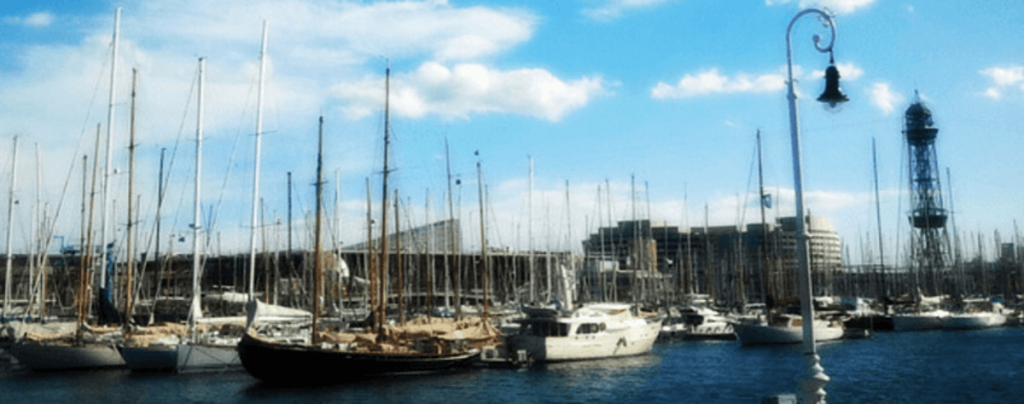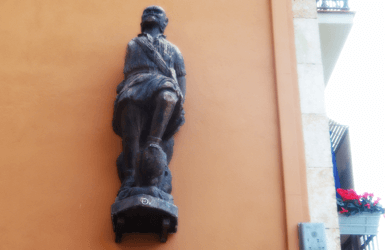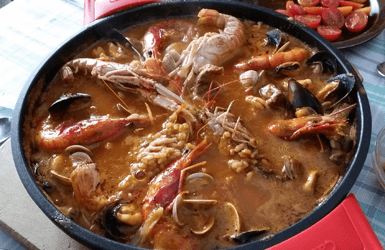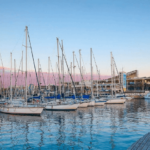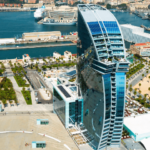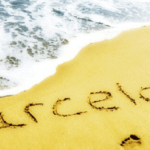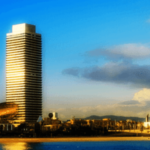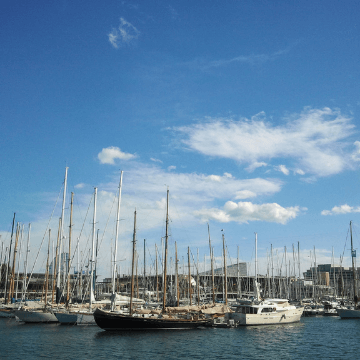
What To Do In Barceloneta In Barcelona
LA BARCELONETA DISTRICT: THE OLD FISHERMEN QUARTER
The word “Barceloneta” means little Barcelona in Catalan, and it’s the name of the city’s fisherman district, located at the bottom of the Old Town, between the Port Vell marina and the local beaches.
The origin of la Barceloneta started after in 1714 the city was defeated by the Bourbon forces and we were punished in many different ways for having opposed the new King Phillip the Fifth. The inhabitants of a large portion of the Born district were kicked out of their homes and their neighborhood flattened to leave room for a new citadel that would be pointing their cannons towards the city and remind people they were being watched.
The people evicted from that area were offered plots in a new district that would be built on a small cape in the Barcelona coast, that had appeared when the sediments carried by the sea eventually connected the small island of Mayans with the beach. However, the area wouldn’t be developed until 40 years later, when the urban plan was executed following military architecture designs and populated by people that worked mostly in jobs related to the sea.
This is what you shouldn’t miss in the Barceloneta district:
1
Marques de la Quadra street
The view of this street from one of its ends gives you an accurate idea of what a “military street plan” means: long, straight and not too wide streets that might remind you of a military camp site where the tents have become buildings. This is a good street to see a very typical scene of the district: cloths hanging to dry on the balconies – lots of them. While it is supposedly forbidden to do that (the city council founds it gives a decadent image), it is tolerated because the neighbors have no choice: their apartments are so small.
And I mean REALLY small: so much locals call them “quarters of apartment” (quarts de casa) and that’s what they actually are. It seems that during the 1900’s due to the immigration waves, homes consisting of street level and one floor were “halved” into separate apartments, that eventually were divided again in quarters.
So no room to dry your laundry inside: the balconies (or even some lines attached to the façade by the entrance door in the street level where anyone could take the cloths away – except that you’ll often see a neighbor seating close by and watching) have become the place to hang up the clothes.
2
Fishermen Guild
The Confraria de Pescadors is the local association that protects the rights of the local fishermen and represents their interests in front of the institutions. Locals have been fishing since the Roman times, and fishermen were already organized in a guild in the Medieval Times. They contributed with money to the construction of Santa Maria del Mar in the 1300’s, and eventually moved their headquarters to the newly built Sant Miquel del Port in 1753.
Later on in 1772 the first lighthouse of Barcelona and one of the first in the Mediterranean Sea was built: the Torre del Rellotge (Clock Tower), that can still be seen in one angle of the pier, reinforcing the fishing and sailing character of the district. The Fishermen Guild is open for visits but it must be booked in advance.
3
El Negre de la Riba
“The Black Man of the Seaside” is a ship figurehead that watches you from a wall in Andrea Doria street. It was first purchased by a nautical store when the ship that decorated it was dismantled after a fire. It was used by several local restaurants as decoration, until it was bought by a gentleman that took it with him to the North of the city where he lived (it is said the Barceloneta people missed the figurehead so much they’d cross the city to pay it visits!), until it was offered to Maritime museum where the original is preserved – Sorry! The one in Andrea Doria street is only a very good copy!
Although funnily enough, the one in the museum isn’t black anymore: it was restored and they discovered that the sculpture was originally… not a black man but an Iroquois! So it was given back its original bright American-Indian colors, while the copy in La Barceloneta remains black and loyal to the tradition.
4
Parc de la Barceloneta
In the Eastern side of the Barceloneta District, where the neighborhood limits with the modern Olympic Village, expands a park of recent creation that reminds you of the Industrial past of the area. Because fishing and navigation haven’t been the only economical engines of the district: during the Industrial Revolution La Barceloneta also housed important factories that employed many locals.
In the park you’ll find a pergola made out of the structure of an old gas tank, and a water tower also belonging to the Gas Company of Barcelona (that by the way has returned to the neighborhood with a spectacular glass building by Miralles & Tagliabue nearby), as well as the entrance gate of the Maquinista Terrestre i Marítima, once one of the most important metallurgical companies in Spain.
5
Estel Ferit
The Wounded Star, or more commonly called “The Cubes” due to its shape, is a contemporary sculpture by Rebecca Horn from 1992 that pays tribute to the Barceloneta district. What it really represents is unclear: some say it might be a crumbling abandoned lighthouse, while other see a representation of the buildings and the cheap food kiosks that were demolished when the area was refurbished in preparation for the 1992 Olympics.
Until then, the city had lost its connection with the sea, and the port and beaches had entered in decadence and were mostly avoided by the locals. This sculpture has become a symbol of the recovery of the Barcelona waterfront, and it’s a great point from where to watch la Barceloneta beach.
AND BONUS! Here is where to eat after exploring the Barceloneta district:
6
Eating in La Barceloneta
What’s your favorite thing to do in La Barceloneta: eating, swimming or walking around?
Marta
MORE BARCELONA TIPS FOR YOU:
SHARE WITH YOUR TRAVEL MATES
RESEARCHING FOR A TRIP IS TIME-CONSUMING…
Need more inspiration?
Our 100% FREE Barcelona Collection will give you everything you need to organize the trip of your lifetime to Barcelona.
BEST INSIDER TIPS FROM THE PROS!


